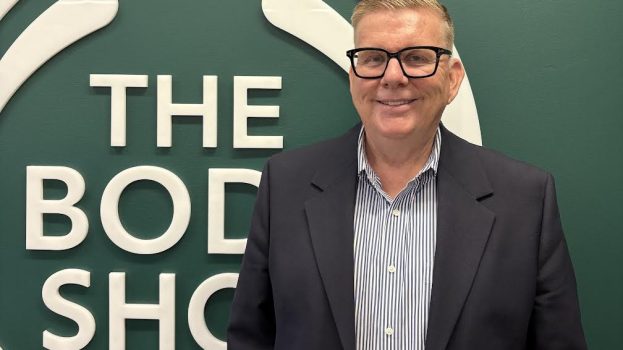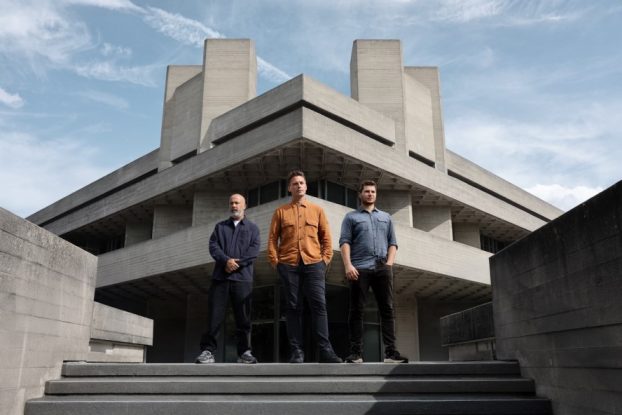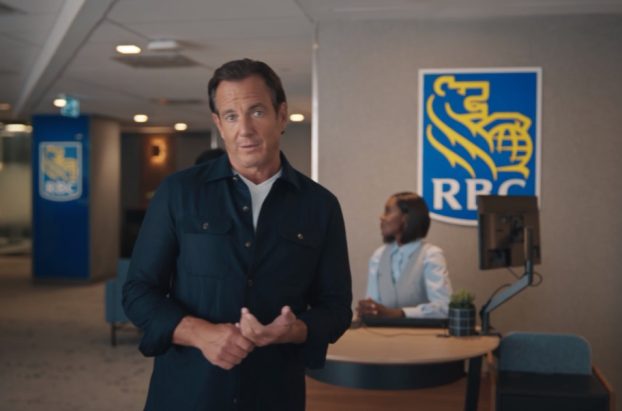
Marcelle is no longer keeping mum about its best kept secret.
If beauty shoppers didn’t know that its skincare and cosmetics undergo rigorous cruelty-free testing to clear stiff safety standards, they should now. That’s because a couple of weeks ago the Quebec-based company revamped its website to showcase what it’s been doing for the last 145 years, long before disruptive digital brands were in the picture.
Now it’s talking about Marcelle’s “Beauty Without Compromise” positioning when it comes to the ingredients, production, quality and price of its products through an education-based digital hub. It’s also the first time that it’s communicating how it’s cleaner as a brand, instead of simply by product, Julie Sanchez, VP of sales and marketing at Groupe Marcelle tells strategy.
Groupe Marcelle is the largest Canadian cosmetic manufacturer that offers hypo-allergenic, fragrance-free products coast-to-coast and under four distinct brands, according to Sanchez.
The group’s flagship brand is Marcelle, with its skincare and cosmetics geared toward women age 25 to 55 and who are looking for eco-conscious, high-quality products at an affordable price. “She’s someone who likes to be informed about ingredients but she’s not looking to trendset,” says Sanchez, adding that its strongest SKU is mascara, which is one of 50 products in the Marcelle portfolio that’s recognized by the Canadian Dermatology Association for its safety standards.
With distribution in over 3,500 stores across Canada, Groupe Marcelle also owns Lise Watier, created in 1972 by a business woman of the same name and targeted toward women who have an extensive beauty routine; Annabelle Cosmetics for a younger consumer between 18 and 30 years, and which is known for its eye make-up (it launched a “Master of Eyes” campaign during the era of Zoom calls, where many are ditching things like lipstick, but investing more in eye cosmetics for virtual meetings); and CW Beggs and Sons, which also offers hypo-allergenic, paraben-free, gluten-free, zero alcohol, and oil-free skincare, but for men.
Strategy sat down to talk with Sanchez about the fickle beauty industry, how Marcelle is differentiating against big (and small) beauty brands as the world goes virtual and increasingly direct-to-consumer, as well as how it’s rethinking the tactile shopping experience in a touchless retail world.
 The company appears to be positioning itself around ‘clean beauty’ when it comes to safe ingredients and ethical production. Why is this now more of a focus for Marcelle?
The company appears to be positioning itself around ‘clean beauty’ when it comes to safe ingredients and ethical production. Why is this now more of a focus for Marcelle?
The market is still defining what it means to be clean. We still have work to do, which is why we don’t want to claim that we’re clean. But Marcelle, as a whole, was born in transparency and doing more testing than necessary to make sure there’s no question of safety. It was born out of wanting to be hypo-allergenic, fragrance-free, and for anyone with sensitive skin. It’s something that has been serving us well… It was actually one of our best kept secrets.
We’ve been hearing from our consumers that they want to spend more time understanding what we’re doing, stuff that we’ve taken for granted. We have an established footprint in the Canadian market, and a lot of our consumers tell us that it is one of the reasons why they choose our products. We’re sourcing, developing and leveraging as many Canadian ingredients as we can. It is one of the differentiators we have against more of the big worldwide players.
We’ve been doing all that in the background but we’ve never put it to the forefront. So now we’re reinforcing the established equity that people tell us they love about the brand when we do our focus groups and talk to consumers. They tell us, “I know all this because I read everything about your products. How are you guys not putting that on billboards? You need to tell more people, I can’t do all the heavy lifting for you. I tell everyone I know.” Now we understand that consumers need more information about safety and quality. It’s energizing when you start listening to the consumer.
How else does a smaller Canadian beauty brand fight for share of voice in such a competitive sector?
We do all of our testing in our labs; we do everything in-house, so we have the capacity to create new products completely from scratch. That’s how we have skin in the game. The fact that we’re able to do everything in-house with our own innovation expert – we have the ability to expedite and be first-to-market with innovative products.
For example, we were recently able to accelerate and provide a hand sanitizer without alcohol to our consumer in under four months. For us, product development is usually a good year-and-a-half. Not having alcohol in the hand sanitizer was important for us because we’re all about sensitive skin, we’re all about the right ingredients. We offered something that was on brand, and certainly on trend because of our new love for hand sanitizer… so there’s that market readiness. And there’s a great energy across the organization in trying to do certain things and really finding that agility to do it fast.
As more shopping goes virtual, how do you compete against players with dedicated investments in digital and tech?
We’ve actually been investing in online for quite a few years. We have our own e-commerce team in-house, we built our sites and we were also working with partner retailers in helping them with their online business. So when everyone started shifting their purchasing habits online, we were ready and we weren’t trying to catch up in offering a valuable experience online.
I used to tell my president that online is like an expensive hobby. But all of a sudden it became fire and it’s an actual real conversation, so now we’re making it digital first. We also recognize that consumers are searching for ingredients or for their needs online, so we have shifted some of our advertising dollars into digital. We’re investing in understanding the consumer journey and trying to connect between the online and the offline.
The beauty industry was once dependant on the tactile experiences of in-store shopping. Fewer people are willing to take the health risk of venturing into physical stores now. How are you rethinking the retail experience for your brands?
For makeup, we like to look at the swatch, we like to try on lipsticks, a lot of touching is involved in discovering products and selecting the right shade for your favourite foundation. All these things were taken away overnight. So now we’re thinking about what a touchless experience could be. We brought together a cross-functional team, and we have our top R&D person explaining protocols and how we can bring it forward.
For instance, we are rethinking our product wall entirely. Instead of relying on testers we’re going to have very visual selections of our portfolio. It’s going to be loud with colour and we are providing our retailers with tools, such as a transparent slide where you can put foundation on it and it’s safe for the consumer to see what it looks like on top of their skin. So there’s no touching, but they can still compare the shades. It’s the first of many transformations for us in terms of learning new ways to sell our products and get them in the hands of consumers.
And how are you transforming your distribution strategy?
Marcelle is not a prestige brand, it’s mass so you can find it in any drugstore… but our products are not placed in usual places. We offer about 60% skincare and 40% makeup. But if you go to Shoppers you won’t find Marcelle products with the other skincare or makeup. We present the totality of what we offer closer to the makeup aisle, as opposed to divided into various sections in the drugstore. That way it’s more of a Marcelle choice. It puts us in a very different conversation than a pure skincare or only a makeup brand. We’re situated in an odd position so that if you know about Marcelle, you know where to go.
[Because of COVID], a lot of people are spending a lot more time in grocery stores now, so we’re talking with grocery retailers and seeing if there’s a place for beauty and for our products. So we are piloting free samples of Marcelle products at Sobeys and Metro and we’re talking with Loblaws. We’re doing tests there to see if our consumer is rethinking their shopping habits.
Sampling is becoming a key activation driver for our brands. We have been partnering with [subscription company] Birchbox in the U.S. and in Europe as well as the U.K. and have been sending sample sizes of our product for a new consumer outside of Canada to discover our products. We also started sending samples [through the mail] in-home as well. And we have seen repurchasing of what’s being sampled. I think there’s an obvious correlation between one and the other.
What are some of Marcelle‘s growth and investment goals? What’s next for your brands?
I want these brands to be more known across the country. We’re the brand to watch in Quebec, whereas in the rest of Canada, we’re the brand to discover. We are distributed coast to coast, but I don’t think we quite match the level of awareness that we should have with that kind of footprint. So it’s certainly somewhere that we want to spend a lot more time.
We’ve recognized that we need to change our strategy and have it be more about the discovery, instead of taking for granted that we’re already established. Lise Watier, for instance, has been in Quebec for over 20 years. But we can’t take that for granted when applying our communication strategy to the rest of the country. It’s something we’re actively thinking about and want to evolve in the coming months.
This interview is part of a series for Strategy C-Suite, a weekly email briefing on how Canada’s brand leaders are responding to market challenges and acting on new opportunities. Sign-up for the newsletter here to receive the latest stories directly to your inbox every Tuesday.
The interview has been edited for length and clarity.























